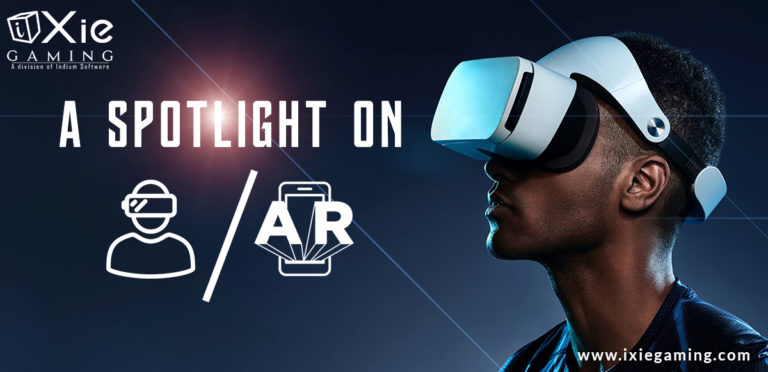To call the Unreal engine a cornerstone of the games industry is not an understatement. Perhaps, one of the most popular game engines in the market, Unreal has been around since the advent of 3d graphics in games.
Right from the first game developed on the engine, aptly named Unreal, to the games released today powered by Unreal Engine 5, this masterpiece of a tool from Epic Games has been innovating every step of the way. With the latest generation of consoles and GPUs that are nothing short of performance beasts, games have never looked as good as they do now.
And Unreal Engine is at the forefront of offering state-of-the-art visual quality within and outside of games, thanks to its latest iteration, Unreal Engine 5. With the release of Unreal Engine 5, and its subsequent updates, a new era of VFX capabilities has emerged.
Let’s take a look at the advanced tools and features available in Unreal Engine 5 and how they all come together to create outstanding visuals.
Nanite
Nanite is without a doubt the crown jewel in the suite of features offered by Unreal Engine 5. It redefines how developers approach asset creation by eliminating traditional polygon budgets and LOD systems. This virtualized micro polygon technology allows developers to create highly detailed and intricate geometry without compromising performance.
Nanite achieves this by streaming and rendering vast amounts of triangle data, resulting in breathtakingly realistic environments and objects. With Nanite, game worlds can be filled with minute details, from the intricate carvings on ancient ruins to the subtle imperfections on characters’ skin, enhancing the level of immersion and visual fidelity.
Lumen
Ask any creator and they would say that lighting plays a huge part in visuals and the quality of the end- product. Complimenting Nanite’s detailed environments is Lumen, a real-time global illumination system introduced in Unreal Engine 5 which revolutionizes lighting in games. This advanced technology provides dynamic and realistic lighting effects that respond to the game world in real-time. Lumen calculates lighting and shadows in real-time, delivering accurate light bounces, soft shadows, and realistic reflections.
With Lumen, developers can create dynamic lighting scenarios that enhance the atmosphere and mood of the game, adding depth and realism to every scene. Whether it’s the soft glow of a sunset or the eerie shadows cast in a dimly lit dungeon, Lumen brings the game world to life.

MetaHuman Creator
Unreal Engine 5 introduced the MetaHuman Creator, an innovative tool that simplifies the process of creating highly realistic and expressive digital characters. The MetaHuman Creator offers a vast library of pre-built, high-quality digital humans that can be customized extensively. With the MetaHuman Creator, developers can manipulate facial features, body proportions, skin details, and hair, resulting in lifelike characters that possess unique personalities.
This tool empowers developers to populate their games with believable and engaging characters, enhancing the overall storytelling and immersion. This tool has been further enhanced with MetaHuman Animator in the more recent iterations of the engine, making the process of creating realistic facial animations easier than ever before.
Chaos Physics and Destruction
Realistic physics simulations and destruction effects are crucial for any project. Unreal Engine 5’s Chaos Physics and Destruction system offers a flexible and robust framework for creating dynamic simulations. With Chaos, developers can simulate various physical interactions, including cloth simulations, fluid dynamics, and rigid body dynamics.
This tool adds depth and authenticity to VFX scenes, allowing for realistic object behavior and interactions. Additionally, the Destruction system provides precise control over how objects break apart and crumble, enabling the creation of breathtaking destruction sequences.
Niagara VFX
The Niagara VFX system is a powerful tool for creating stunning visual effects using a node-based particle system. Niagara grants developers the ability to control the behavior, appearance, and interaction of particles with incredible precision. With Niagara, developers can simulate a wide range of effects, such as fire, smoke, explosions, weather phenomena, and more. The versatility and flexibility of Niagara make it an essential tool for crafting highly detailed and immersive visual sequences, offering limitless creative possibilities.

Conclusion
Unreal Engine 5 represents a groundbreaking leap forward in videogame visuals by seamlessly integrating Nanite, Lumen, MetaHuman Creator, Chaos Physics, and Niagara VFX. These cutting-edge technologies empower developers to create game worlds with unprecedented levels of detail, realistic lighting, believable characters, immersive physics, and stunning visual effects. There are also tools like Quixel Megascans that offer high-fidelity assets for free and via a marketplace.
The latest iteration of Unreal also introduced Substrate, a materials framework, that simplifies the process of creating different materials, while also implementing procedural generation. The combination of these tools pushes the boundaries of what is visually achievable in games and offers unparalleled immersive experiences for the player.
It is safe to say that Unreal is the pioneer in providing breakthrough developer-friendly tools to ease the process of game development. What is next for Unreal is yet to be seen, but the prospect is quite exciting indeed.
Planning to deliver engaging and highly immersive games to players worldwide? iXie would be the right choice with massive experience in the gaming industry over the past decade.






